Kongsberg Sensors and Equipment for Germany's New Ocean Research Vessel
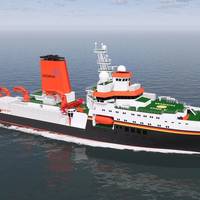
Norwegian marine equipment and technology firm Kongsberg will provide scientific sensors and scientific handling equipment for Germany’s new ocean research vessel, the 135-metre Meteor IV. The new 10,000GT vessel will be able to house 35 scientists plus 36 crew. Meteor IV will be built by MeyerFassmer Spezialschiffbau (MFSB) for the German Federal Ministry of Education and Research. The vessel, due for delivery in 2026, replaces existing research vessels Meteor and Poseidon.“We…
Hybrid Research Vessel Delivered to University of Vermont
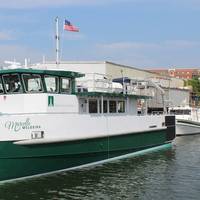
Derecktor Shipyards NY in Mamaroneck, N.Y. announced it has delivered a new hybrid research catamaran to the University of Vermont (UVM). The innovative vessel, Marcelle Melosira, will serve as a floating classroom and laboratory, enabling advanced research operations and hands-on educational programs.Designed by Chartwell Marine and built in collaboration with UVM and Chartwell, the 64-foot research catamaran has been crafted to fulfill the functions outlined by UVM’s Rubenstein School of Environment & Natural Resources.
Keel Laid for New German Research Ship

The Meyer Group's Neptun Werft officially laid the keel for the new German research vessel Meteor IV during a ceremony at the Rostock, Germany shipyard.The Meyer Group is building the research vessel together with the Lower Saxony shipyard Fassmer on behalf of the Federal Ministry of Education and Research."Only two months after the burning start, the assembly of the individual components for the Meteor IV is now beginning. At our shipyards in Rostock and Papenburg, and together with Fassmer Werft…
Discovery: Historic Shipwreck Found in Lake Huron
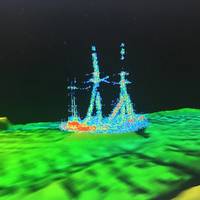
Researchers from NOAA, the state of Michigan, and Ocean Exploration Trust discovered an intact shipwreck resting hundreds of feet below the surface of Lake Huron. Located within NOAA's Thunder Bay National Marine Sanctuary, the shipwreck has been identified as the sailing ship Ironton. Well preserved by the cold freshwater of the Great Lakes for over a century, the 191-ft. Ironton rests upright with its three masts still standing."Using this cutting-edge technology, we have not only located a pristine shipwreck lost for over a century…
CIMC Raffles Delivers Baltic Enabler to Wallenius Sol
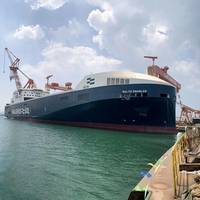
Chinese shipyard CIMC Raffles on Wednesday delivered the ConRo ship Baltic Enabler to shipowner Wallenius Sol.The newbuild, together with sister ship Botnia Enabler delivered earlier this year, are considered to be the world’s largest ice-rated ConRo vessels with multi-fuel operation.“It’s fantastic that we can soon put both sister ships in regular traffic. Not only will we have a huge capacity increase on the container and RoRo sides, but we will also take a giant stride toward a future-oriented fleet that will reduce emissions and have a major impact on industry in the Gulf of Bothnia…
Geoquip Marine Accused of Jones Act Violations
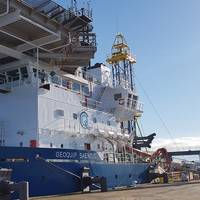
An American offshore services trade group is accusing Swiss-headquartered Geoquip Marine of violating the Jones Act, a U.S. law requiring seaborne cargo shipped between two U.S. points to be carried by American-built, -crewed and -owned vessels.A report published by the Offshore Marine Service Association (OMSA) alleges that Geoquip Marine's Geoquip Saentis—a Chinese-built, foreign-crewed and Bahamian-flagged vessel—transported subsoil samples from points on the U.S. Outer Continental Shelf (OCS) to U.S. ports for testing in support of an offshore wind project."U.S. wind power should mean U.S.
Subsea Munitions Response: Government Funding Available for Environmental R&D
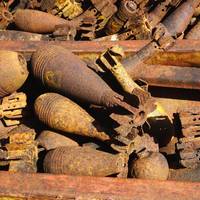
The Department of Defense’s (DoD) Strategic Environmental Research and Development Program (SERDP) is seeking to fund environmental research and development in the Munitions Response program area. SERDP invests across the broad spectrum of basic and applied research, as well as advanced technology development. The development and application of innovative environmental technologies will reduce the costs, environmental risks, and time required to resolve environmental problems while…
The Value of Friends in “High-Latitude” Places
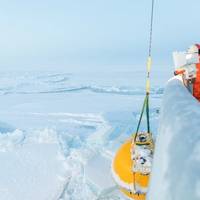
Who do you call when you need a job done on short notice, in total darkness, under 100-percent ice cover, thousands of meters at the bottom of the sea? In the case of the U.S. Office of Naval Research (ONR), you call your friends in Norway.That is exactly what the Chief of Naval Research Rear Admiral Lorin C. Selby did when he enlisted the help of the Norwegian Coast Guard icebreaker and offshore patrol vessel, the CGV Svalbard, to retrieve oceanographic moorings containing irreplaceable data.
Ireland’s New Research Vessel to Be Named Tom Crean
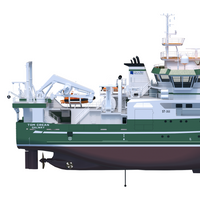
Ireland's new marine research vessel due to enter service in 2022 will be named the RV Tom Crean, Minister for Agriculture, Food and the Marine, Charlie McConalogue announced. "I am delighted to announce the name of Ireland's new marine research vessel is the RV Tom Crean, acknowledging the contribution of a legendary Irish Explorer," McConalogue said.Tom Crean was a renowned seaman and explorer who undertook three major groundbreaking expeditions to the Antarctic in the early years of the 20th Century which sought to increase scientific knowledge and to explore unreached areas of the world…
Sonardyne USBLs Installed on Brazilian Geoscience Vessels
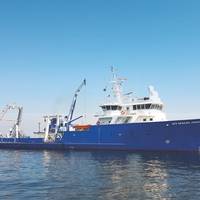
Brazilian geoscience services company OceanPact Geociências has chosen deep water positioning technology from Sonardyne Brasil Ltda. to support its geophysical, geotechnical and environmental research operations across the region.Ranger 2 Ultra-Short Baseline (USBL) systems have been installed on board OceanPact’s research vessels Seward Johnson and Austral Abrolhos, both currently on hire to Brazilian oil major Petrobras. The systems will be used to precisely track the location of underwater equipment and sensor packages deployed from the ships…
NOAA-Viking Public Private Partnership, a Win-win for Research

There was important cruise news in January: Viking – a premier European ocean and river cruise company - will offer two new “destination-focused travel experiences,” starting in 2022. One set of cruises becomes Viking’s first foray in the inland North American market, in this case the Great Lakes. Another set of cruises will head to the Arctic and Antarctica. Viking is building two new vessels: the Viking Octantis and the Viking Polaris, under construction now in Norway, by Fincantieri’s VARD.In a press release Viking writes that it has created “the thinking person’s expedition.” Indeed…
Ballast Water Update: Weighing the Advent of VIDA

The hard-fought passage of VIDA promises a simpler, more unified and logical set of environmental standards related to the discharge of myriad vessel streams. Industry wanted it, and now it is here. Will it deliver, and if so, when? That depends on who you talk to.As most commercial maritime operators know, US ballast water regulations made a sharp turn last December. That’s when President Trump signed the Frank LoBiondo Coast Guard Authorization Act of 2018.That legislation contained Title IX – the “Vessel Incidental Discharge Act (VIDA)…
Military Veteran Finds Calling in Maritime Program

Jennifer Allen is a U.S. military veteran who lives with PTSD. She is also a recent MERTS graduate pursuing a career in the maritime industry.MERTS (Marine and Environmental Research and Training Station) is a small campus situated just east of Astoria on the banks of the Columbia River. It is part of Clatsop Community College and houses a variety of programs including a robust maritime curriculum offering U.S. Coast Guard certifications and associate degrees.“Before coming to MERTS I was going through a rough patch,” Jennifer said.
Cruise Shipping: 'Green Cruising' with Hurtigruten
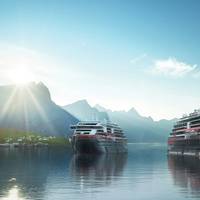
Hurtigruten orders third hybrid-powered expedition cruise shipGrowth in the global cruise sector continues, as Hurtigruten, the world’s largest expedition cruise operator, signed an MOU with shipbuilder Kleven Verft AS for the construction of a third hybrid-powered expedition cruise ship. Tom Mulligan, Maritime Reporter’s Science & Technology writer, reports from Norway.“We are thrilled to introduce yet another revolutionary hybrid-powered expedition ship,” enthused Hurtigruten’s CEO, Daniel Skjeldam.
Arctic Sea Ice is Youngest and Thinnest Now
The Arctic Ocean's blanket of sea ice has changed since 1958 from predominantly older, thicker ice to mostly younger, thinner ice, according to new research published by NASA scientist Ron Kwok of the Jet Propulsion Laboratory, Pasadena, California.With so little thick, old ice left, the rate of decrease in ice thickness has slowed. New ice grows faster but is more vulnerable to weather and wind, so ice thickness is now more variable, rather than dominated by the effect of global warming, according to NASA's Earth Science News Team.Working from a combination of satellite records and declassified submarine sonar data, NASA scientists have constructed a 60-year record of Arctic sea ice thickness.
Another Milestone for RRS Sir David Attenborough Build
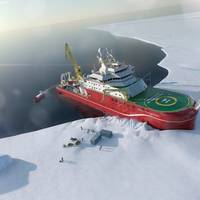
Rolls-Royce is marking another milestone on the journey toward the completion of Britain’s new polar research vessel the RRS Sir David Attenborough being built by Merseyside shipyard Cammell Laird. The last of the vessel’s Bergen B33:45 engines/gensets have been craned into the ship’s hull at Cammell Laird ready to be connected to the RRS Sir David Attenborough’s Rolls-Royce propulsion system. The nine cylinder engines are carefully installed in three separate pieces. The first part of the nine cylinder engine to be craned into place was its double resilient foundation.
Two Shipwrecks Found in Lake Huron
NOAA maritime archaeologists and partners have located and identified two previously undiscovered historic shipwrecks in Thunder Bay National Marine Sanctuary. The shipwrecks are the wooden steamer Ohio (1873-1894) and the steel-hulled steamer Choctaw (1892-1915). In May 2017, a sanctuary-led expedition used high-resolution sonars to map the bottom of Lake Huron, during which they located the two ships. At the time, researchers were confident they had discovered the 202-foot Ohio and the 266-foot Choctaw. The team recently confirmed the vessels’ identities using underwater robots to collect photos and video of the shipwrecks. The sanctuary is planning future expeditions to better understand, manage and interpret Ohio and Choctaw.
Oil Spill Response: USCG Testing Evolves

Coast Guard R&D Center’s JMTF is a big part of the nation’s environmental research efforts. In 1972, the U.S. Coast Guard Research and Development Center (RDC) established the Fire and Safety Test Detachment (FSTD), which later became the Joint Maritime Test Facility (JMTF), at Coast Guard Sector Mobile in Mobile, Alabama. As part of the unit’s establishment, test facilities were also built on nearby Little Sand Island in Mobile Bay. Since its inception, multiple retired commercial vessels were used as test platforms ending with the State of Maine, which was removed in 2010.
The Impact of Future Global Tides on Energy
The first comprehensive study of the impact of global sea-level rise on tides has implications for future coastal flood risk, harbour management, and the long term planning of tidal energy sites. This research, published in Continental Shelf Research by scientists at the National Oceanography Centre (NOC), University of Southampton and Deltares, shows that sea-level rise can significantly alter tides across the world in many different ways in both space and time. The change will be most pronounced in shelf seas on the east coast of the Americas, northwest Europe, north coast of Russia, across Asia and Australasia. This study was conducted by feeding a range of ‘plausible’ estimates of global sea level rise…
EALs Rise Up on Deck
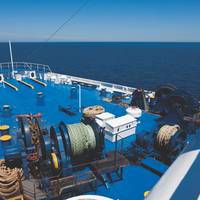
The next critical area of consideration for the use of Environmentally Acceptable Lubricants is on deck. What’s leaking into the water from your cranes and winches? Vessel fleets face an increasing number of environmentally-focused regulations, adding complexity to their operations and creating urgency around compliance. These regulatory requirements, however, do not offset an operator’s need for products that perform consistently well. With the right Environmentally Acceptable Lubricants (EALs)…
Changing Spill Risk in a Changing Arctic Landscape

Industry analyst and environmental consultant Dagmar Schmidt Etkin, PhD, takes a hard look at a rapidly shifting operational landscape in the Arctic. Always an honest broker of information, Etkin tells it like it is. Oil spill risk is present anywhere that oil is present in reservoirs, or is transported, consumed, stored, and handled in some way. The Arctic is no exception. Not only are there oil reserves in the Arctic, some of which are being or will soon be considered for exploration and production, there is also oil being transported as cargo or as fuel to Arctic communities.
Orca ESS Retrofit for Norwegian Research Vessel
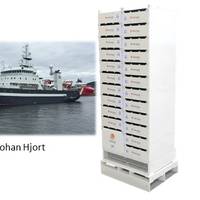
Corvus Energy’s next generation Orca ESS has been selected by Halvorsen for the retrofit of the fisheries and environmental research vessel MS Johan Hjort. Halvorsen Power System AS has selected Corvus Energy as the supplier of the lithium ion based energy storage system (ESS) for a retrofit of marine research vessel, MS Johan Hjort. Corvus will supply its recently released, next generation Orca Energy solution to provide power to the vessel for peak shaving, research operations and crew comfort.
Thordon Bearings Launches Oil Savings Calculator
Thordon Bearings has developed a bespoke modeling tool capable of calculating the amount of operational oil prevented from leaking into the world’s oceans with each installation of a seawater-lubricated propeller shaft bearing. To be launched officially on April 22 to coincide with Earth Day 2016, the world’s largest environmental movement, now in its 46th year, the Oil Savings Calculator shows that more than 60 million liters of oil pollution has been saved to date. “In our opinion the only acceptable propeller shaft stern tube oil leakage is zero.” said Terry McGowan, President & CEO Thordon Bearings. “Thanks to those vessels that have already installed seawater-lubricated propeller shaft bearings…





